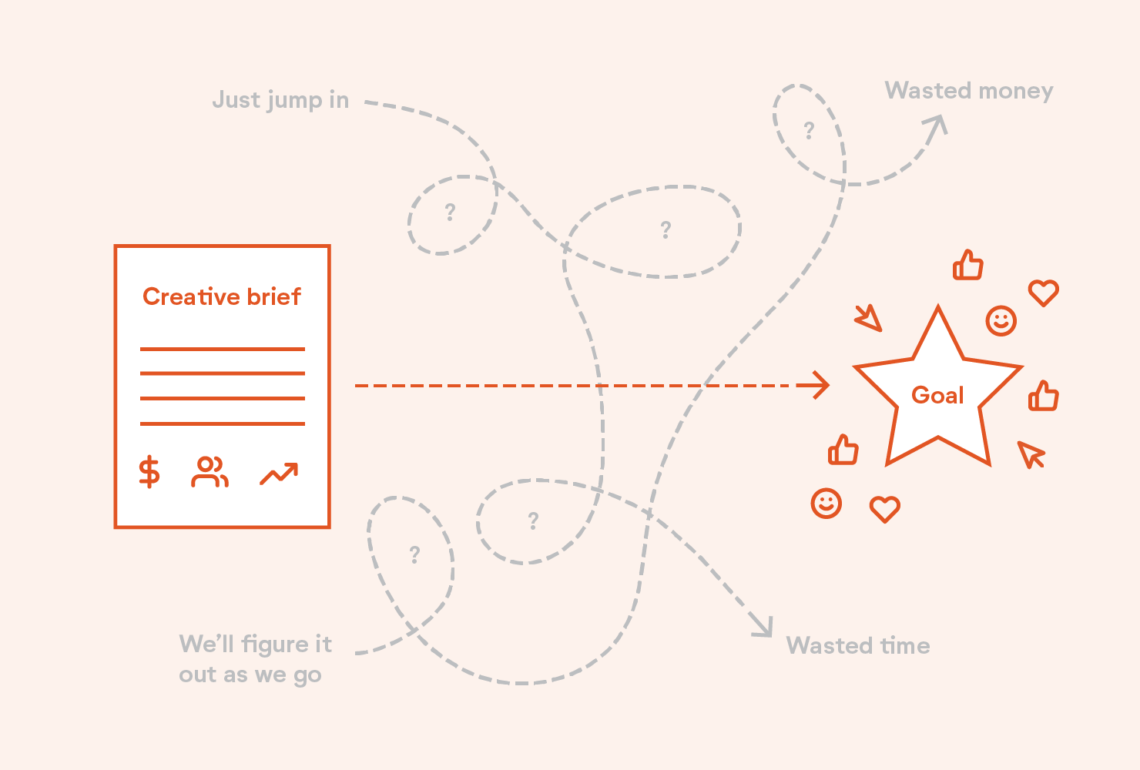What if there was a treasure map that could ensure your marketing efforts strike gold every time? One that solidifies the direction of your brand and connects the strategy with the creative execution.
This treasure map is what you may have heard your agency refer to as the creative brief. It’s a pretty big deal for us. Before we kick off a new campaign, website, or branding project, we start with a creative brief. As a quick refresh, it’s an internal-facing document that includes the most important information about your brand, your vision, the reason for a campaign, and its objectives.
While it may seem like an extra step in the process, developing a creative brief offers benefits for both you and your agency. This is especially true now, in a time when remote work is becoming more common and we don’t always have the luxury of in-person working sessions. We’ll explain a few reasons why creative briefs are so important and clear the way for us to do our best work for your brand.
It defines your brand
Every creative brief defines the key characteristics of your brand, including the strategy, target audience, goals, and how we aim to achieve them. By taking the time to articulate this information and the objectives, it creates a clear definition of your brand and identifies if anything is missing.
It keeps everyone aligned
A good creative brief is critical to ensure everyone is on the same page—literally. It sets the project intention, creates focus, and irons out any misunderstandings before the work begins. Whether it’s a designer, writer, developer, or social media manager, a brief should make it possible for anyone to understand your brand and what you offer. They also help spark ideas for creative work and serve as a guide for which we can measure our work.
It identifies your audience
Chances are, you and your agency have done a lot of research to identify and understand your brand’s target audience and personas. The creative brief should include those insights about who you want to reach, what your target audience needs, their current behaviors, and how your product or service can provide a solution.
Consistent messaging
How does your brand speak? Is it casual? Informative? Edgy? Conversational? A creative brief should define the tone and personality of your brand. This will ensure that messaging stays consistent across all platforms, whether it’s a commercial script, a digital ad, or a print ad. And when you have a consistent voice, it helps your brand become recognizable to consumers.
Save time + budget
Developing a creative brief is essentially a practice run between you and your agency. It helps us illustrate our vision for your brand and learn more about what you’re looking for. By working with you to refine the brief before we begin executing ideas, it leaves less room for unwelcome surprises and outlines a roadmap for success.
Articulate your metrics
How will you determine the success of your project or campaign? If, for example, your objective is to drive traffic to your website or increase the open rate of your email marketing, determine that in the creative brief. It makes for a tangible way to measure if a campaign is working or if something needs tweaking.





